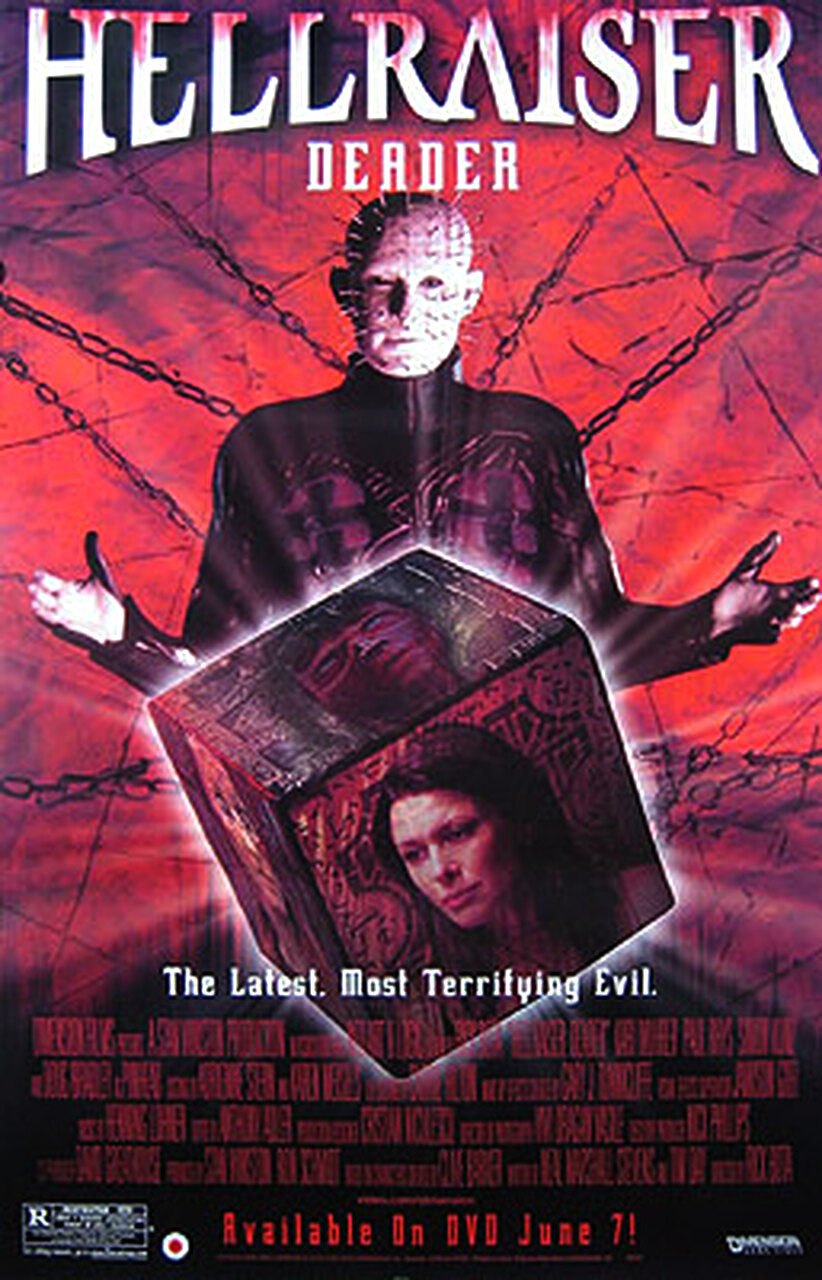Hellraiser VII: Deader began life as a spec script called Deader, from screenwriter Neal Marshall Stevens, purchased by Miramax when every production company in Hollywood was still looking for the next Seven. Like with the two previous films in the Hellraiser series, the script was reworked into a Hellraiser movie, by adding the iconic puzzle box and Pinhead (Doug Bradley, as always) to scenes here and there. It’s rarely a good sign when it is obvious to viewers that a movie is a rework. Miramax, the company that owns Hellraiser, has been a poor steward for the property, shunting it off to direct-to-video releases utilizing reworked red-headed stepchild screenplays and miniscule budgets. All atmosphere and nuance from the first film have been totally excised, leaving the series anonymous and dull. What a shame.
Kari Wuhrer plays Amy Klein, an intrepid reporter for the London Underground newspaper, which looks to be an edgy Village Voice-type publication. One day, as she’s wrapping up a story about the London drug scene, her editor, Charles (Simon Kunz), puts her on a new story. The newsroom received a videotape from Romania, showing a ritual sacrifice and supposed resurrection carried out by a new death cult called the Deaders, led by the mysterious and pasty Winter LeMarchand (Paul Rhys). Charles wants Amy to head to Bucharest post-haste, and find out if there’s any truth to what was on the video, or if it’s just trickery.
Those viewers who have seen previous Hellraiser flicks might recognize the name LeMarchand. The character is the descendant of the toymaker introduced in the 4th Hellraiser flick — the one who created the box. Acknowledging the character’s name is all the backstory Winter gets, however. Screenwriter Tim Day didn’t rework Stevens’ draft that much.
After Amy arrives in Bucharest, with embarrassing amounts of Gen X swagger, she begins to chase down leads, and it isn’t long before she finds herself wrapped up in the world of the Deaders. Experienced movie viewers will know where this is all heading. The  cult will start playing mind games with Amy. For her part, she will begin to question her sanity, suffering from hallucinations and jumps in time and place. Many, many jumps in time and space.
cult will start playing mind games with Amy. For her part, she will begin to question her sanity, suffering from hallucinations and jumps in time and place. Many, many jumps in time and space.
A good psychological horror flick will, at times, befuddle the viewer before bringing the story home in the final act. This flick does befuddle the viewer, but not through any cleverness n the plot. Rather, director Rick Bota would just snap his fingers, and all of a sudden, Amy is in a different location. During one sequence in the film, he transported Amy all around Bucharest three times in a matter of minutes, from a creepy hallway to a creepy room, from another creepy room to a bed, and from the bed to a bath. There is no way to develop narrative cohesion when Bota just yanks Amy out of one setting and into another with no warning. What it does do, is disguise a weak plot.
The Pinhead character is used as shorthand to remind a viewer that this is indeed a Hellraiser flick. But the character has little purpose in this movie. There isn’t even any meaningful exposition to give the plot clarity.
This film is a challenge to a viewer’s attention span. The entire film is one gigantic loose thread. The only saving grace is that resolution, when it does comes, is a gory mess. It’s not worth the wait.
Hellraiser VII: Deader is a dull psychological horror flick. It also marks the third straight Hellraiser flick that is not a Hellraiser flick. Miramax clearly thought these flicks were barely worth their time and effort. They can’t have expected anything less than a reciprocation from viewers and unpaid internet reviewers alike. It takes over the #322 spot from Summer City. Stay away.
